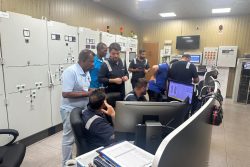Dear Editor,
Recent letters to the editor have highlighted Guyana’s un-comparative advantages with other exporting countries (Nov 25), poor organization (Nov 28) and unreliable air transport (Dec 2). While valid points were made in all three letters it would be an over- simplification to imply that the removal of one constraint, for example unreliable air transport, would significantly increase volumes of exports of fruits and vegetables. In countries of the region where entrepreneurs/donors have invested significant sums in improving air services for agricultural exports (e.g. Eastern Caribbean and Guyana) exportable volumes have not increased sufficiently to cover the fixed and operating costs. As a consequence the trial efforts have always been closed down as soon as the available funds (usually from donors) run out. Such efforts are not economically sustainable because there is never just one problem to be corrected. To ensure significant supplies of exportable quality products farmers must first produce them and intermediaries must then have the capability to maintain that quality until it reaches the buyer and ultimately the consumer.
Any product system can be visualized as a continuous chain (a circle) with as many as 20 links or more. If five links in the chain are broken then fixing only one link will not solve the problem. Just as with a gold chain, all broken links must be repaired before the chain will provide a quality service. And there are participants at each link that must participate in identifying the problems and finding and implementing the solutions.
The key participants in a typical commodity chain (circle) include the farmers, who plan, plant, grow, harvest and sell; multiple intermediaries who transport, store, process, standardize and package; distributors who export or sell to wholesalers and retailers, and service providers who supply farm inputs, technical assistance, information, finance and infrastructure.
Depending on the price received by the farmers, they will decide whether to plant, or not, the same or a different product in the following cycle.
Any or all of the many participants in the commodity system make decisions that affect the quality, quantity and value of the product as it flows through the system. Consequently, there are an infinite number of pre and post harvest problems that can and do affect each product. For example, since most farmers in Guyana are small and have very scarce financial resources they tend to minimize investments in farm inputs or they may use the wrong chemicals because of their lower cost. As a result, most of the products they sell do not meet international standards and therefore cannot be exported.
Logic tells us that if problems occur at several different points in the commodity chain then strategies must be designed that offer solutions for each problem at the respective point in the commodity chain.
For that reason, successful exports of fresh produce will require an integrated commodity systems approach and the involvement of farmers, intermediaries, NGOs, public sector institutions and donors.
Yours faithfully,
Jerry La Gra





